Bush-Herbert Building
Introduction
Text-to-speech Audio
This historic building was constructed shortly after the lot containing a brick stable was bought by T. L. Herbert in 1910. From 1911 to 1961, the building was the home of T.L. Herbert and Sons, a company formed by the son-in-law of brick mason and Confederate veteran W. G. "Major" Bush. In 1867, Bush had founded the Bush Brick Company; Herbert took over as president of the company when Bush retired in 1900. Herbert operated both businesses from the "new" building at 194 Third Ave. The building was listed in the National Register of Historic Places in 1982. It now houses Bowie's, a rock 'n roll bar with live music every night.
Images
Bush-Herbert Building painted bright blue in 2010 photo (Andrew Jameson)
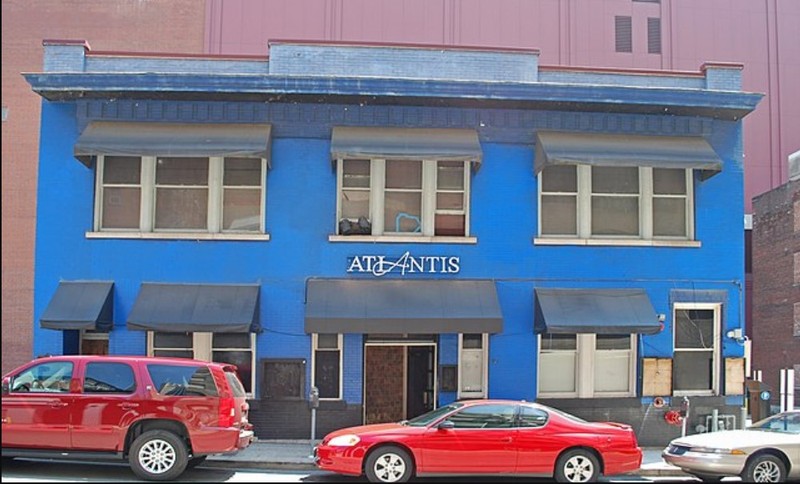
Sample brick walls in former showroom, Bush-Herbert Building, 1980 (David Paine for NRHP)
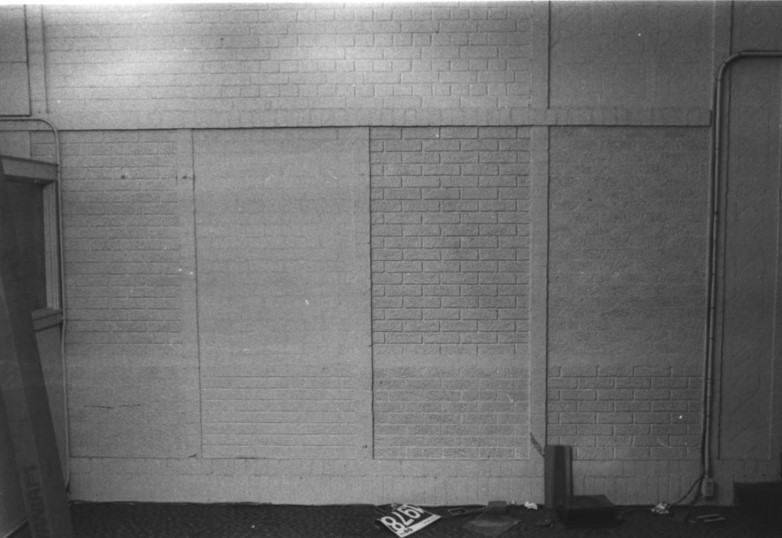
View from reception area of Bush-Herbert Building into former showroom in 1980 (Paine for NRHP)
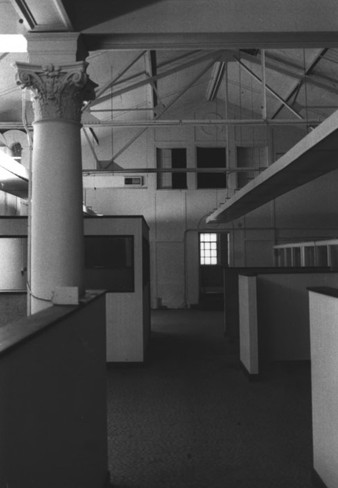
View across Third Ave. N. to front of Bush-Herbert Building in 1980 (Paine for NRHP)
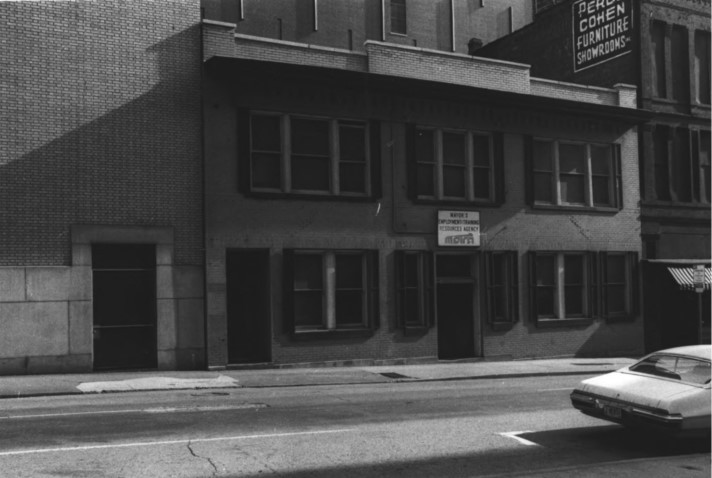
Bush-Herbert Building (green arrow) on 1914 Sanborn map (Vol. 1 p.4)
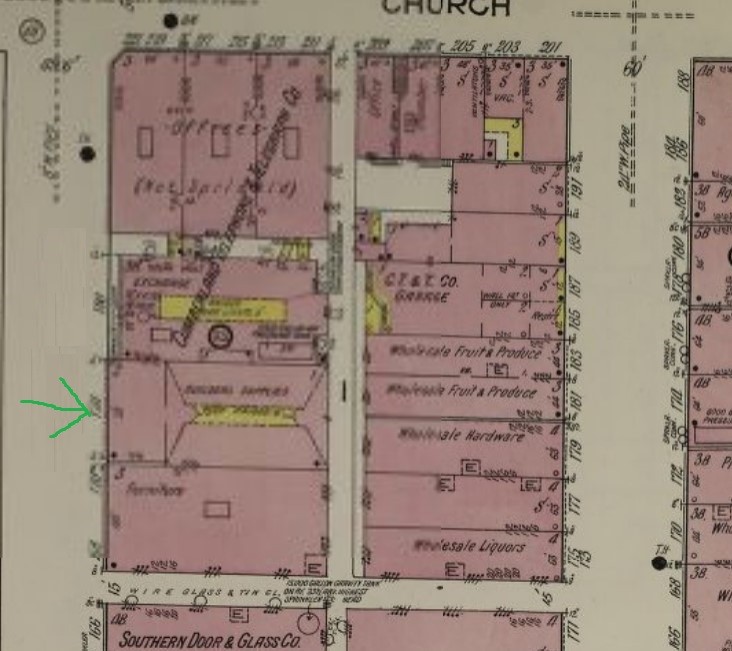
Backstory and Context
Text-to-speech Audio
W.G. Bush became highly successful with his brickmaking business. He began as a teenaged apprentice to one of his uncles, a brick mason, in the 1840s. W.G. left Nashville to fight for the Confederacy. Upon returning to Nashville, he set up his brickmaking firm. W.G. mass-produced bricks at a central location by the raw material source, clay pits. He began machine-making brick in 1879. This was more efficient than hand-making bricks at the construction site of new buildings, as had been the usual practice. After the clay pit was mined, it was filled with water and was known as Bush Lake. The factory/ brick yard property was on the east side of the Cumberland River, west of the intersection of Cowan and Pond streets, at the end of a railroad spur line. By the late 1880s, the Bush firm was producing about 25 million of the 40 million bricks being produced annually in Nashville. Some of the major buildings in Nashville built of Bush brick include the Ryman Auditorium, Downtown Presbyterian Church, and many Vanderbilt University structures. The original Maxwell House Hotel - the origin of the coffee brand - was constructed of Bush brick; the building has not survived.
Bush brought first his son, W.C., into the business in 1870 and then his son-in-law, T.L. Herbert, in 1879. Bush Building Company was founded in 1890 by Herbert. Later, Herbert's nephew, William Bush Sneed, joined the company as a bookeeper and eventually headed the firm by the early 1930s. W. B. Sneed's sons joined the family business.
Part of the Bush-Herbert Building may have incorporated parts of the nineteenth-century stable that stood here before Herbert acquired the property. A 1908 atlas map of the city does show the future location of the Bush-Herbert Building's footprint as a brick stable. The 1914 Sanborn map shows a 2-story, brick building selling building supplies at the Bush-Herbert Building's footprint, the same size as the former stable. The building was organized with two stories of office space in front and a large showroom behind. The showroom once displayed different kinds of Bush brick in wall sections with various colors and styles of brick. The showroom featured a gable roof with exposed steel trusses. The rear 14 ft. adjacent to the alley held a conference room and rest rooms with a storage loft above. The building has been painted a number of times, but the original front was red brick with decorative white glazed brick up to the first-floor windows and around the central, double-door entrance. The front entrance door on the far-left side replaced a window in the 1960s.
The T.L. Herbert & Sons firm expanded beyond bricks to other supplies related to brick masonry, like gravel and ready-mix concrete. They also branched out into a third business of river dredging and barges. W.G. Bush & Company was the last of the city's brickmaking firms in business by the mid-1970s. By that time, clay was being brought in from about 14 miles away on the Cumberland River. The family's businesses were consolidated into Herbert Materials, Inc. in 1979. That firm has become part of WASCO Inc. By 1980, the Bush-Herbert Building contained offices of the Mayor's Employment & Training Resources Agency. In 2010, a company named Atlantis operated from here.
Sources
G.M. Hopkins Co. Atlas of the City of Nashville 1908. Philadelphia, PA. G.M. Hopkins Co., 1908.
Paine, David H. NRHP Nomination of Bush-Herbert Building, Nashville, Tennessee. National Register. Washington, DC. National Park Service, 1981.
WASCO Inc.. Our History, Engineered Masonry Excellence: WASCO Inc. January 1st, 2022. Accessed August 24th, 2022. https://wascomasonry.com/about/history/.
Zepp, George. "Family's bricks stand in Nashville's buildings." The Tennessean (Nashville) October 3rd, 2007.
https://en.wikipedia.org/wiki/Bush%E2%80%93Herbert_Building#/media/File:BushHerbertBuildingNashville.jpg
National Park Service (NPS): https://npgallery.nps.gov/GetAsset/6475e87d-8eec-4b57-b0ad-99f5d133bbbb
NPS: https://npgallery.nps.gov/GetAsset/6475e87d-8eec-4b57-b0ad-99f5d133bbbb
NPS: https://npgallery.nps.gov/GetAsset/6475e87d-8eec-4b57-b0ad-99f5d133bbbb
Library of Congress (LOC): https://www.loc.gov/item/sanborn08356_005/
